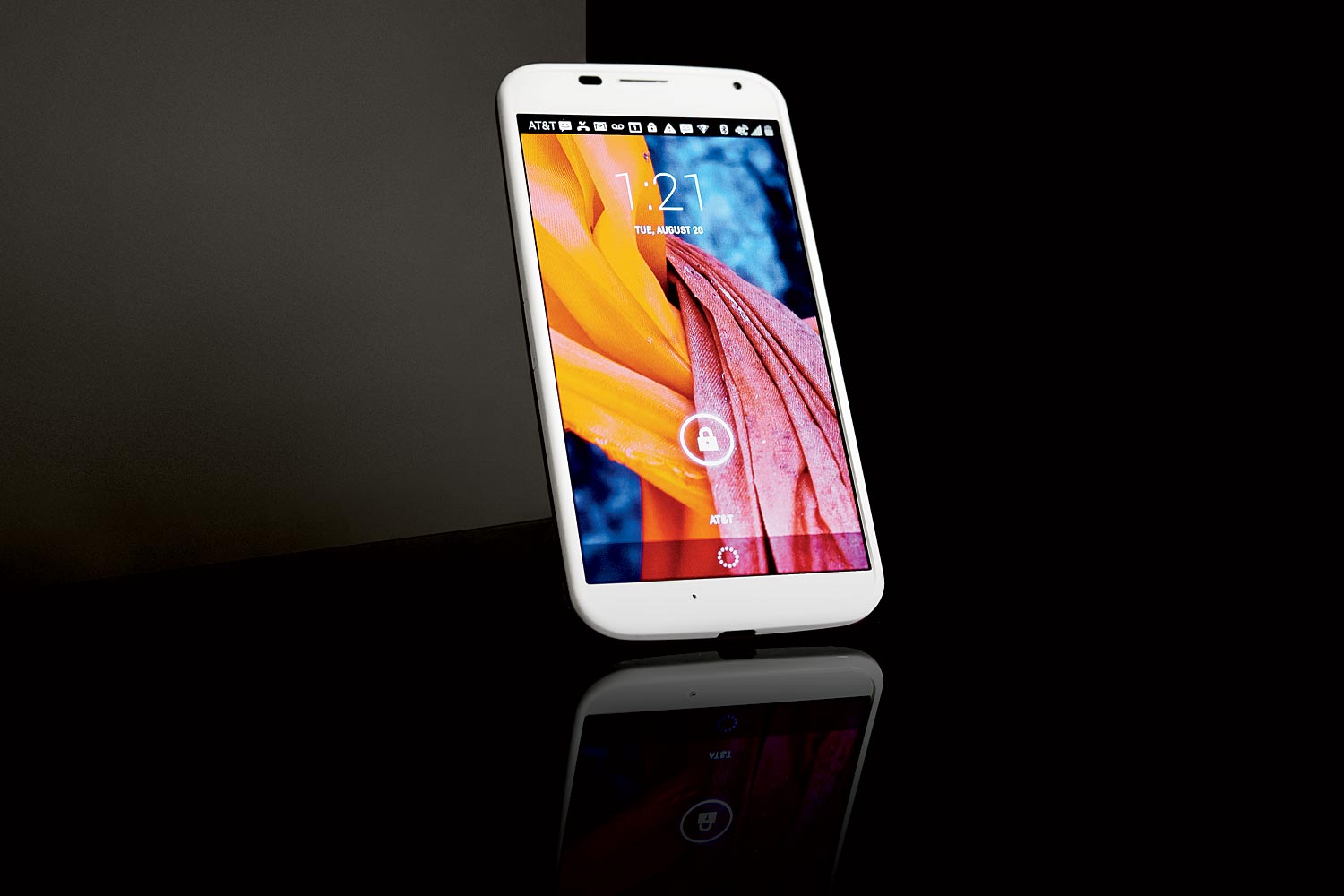If there is one month to get excited about innovation in Chicago, this is it. October marks the 12th annual Chicago Innovation Awards; recent winners have included the first FDA-approved virus-killing facemask, cooked up at Medline Industries in Mundelein (for more info, see chicagoinnovationawards.com). And October 14 kicks off the third annual Chicago Ideas Week, a seven-day confab created by Groupon cofounder Brad Keywell that welcomes such luminaries as Yelp chairman Max Levchin and Startup America Partnership CEO Scott Case (buy tickets at chicagoideas.com).
These events cap off a year of promising developments for fostering innovation in this city, including the University of Illinois’s decision to create a research facility downtown and the plans of the pharmacy benefits firm Catamaran to build a 25,000-square-foot innovation center in River North.
But the truest gauge of the state of innovation here is the number of products conceived, developed, and brought to market by Chicagoans. After consulting a host of experts—among them Troy Henikoff (managing director of the startup accelerator TechStars Chicago) and Kevin Willer (former head of River North entrepreneurial incubator 1871)—Chicago identified six of the most interesting creations.
Each promises to make life better, in ways large and small.
Google Now
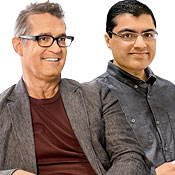
Inventors
A team led by Jim Wicks (left), 49, and Iqbal Arshad, 41, of Motorola Mobility, Libertyville and the Loop
What it is
The first touchless voice control system on a smartphone (that phone is Moto X, made by Google subsidiary Motorola Mobility)
How it works
After you say “OK Google Now” three times, voice recognition software knows who you are, and Google Now becomes a digital personal assistant that does your bidding—no button pushing necessary. If you need directions while driving, for example, just say “OK Google Now” and ask where to go. Even if your phone is in sleep mode, it will wake up and do what you tell it. The New York Times tech columnist David Pogue calls the system “a truly inspired idea” and “a leap forward in both safety and convenience.”
How they came up with it
“We wanted to allow [phone users] to focus on the environment around them” instead of fiddling with their devices, says Jim Wicks, Motorola Mobility’s senior vice president of design. Over months of experimentation and testing, Motorola engineers led by Iqbal Arshad, senior vice president of engineering, developed a processing system dubbed the X8, which enables the phone to be in constant listening mode. (They’re tightlipped about the details.) The Web-searching components of the system came from developers at parent company Google in Mountain View, California. “We fed off each other,” Wicks says.
Where to get it
All major carriers including AT&T, T-Mobile, and Sprint ($199 with a two-year service contract)
X-Cube
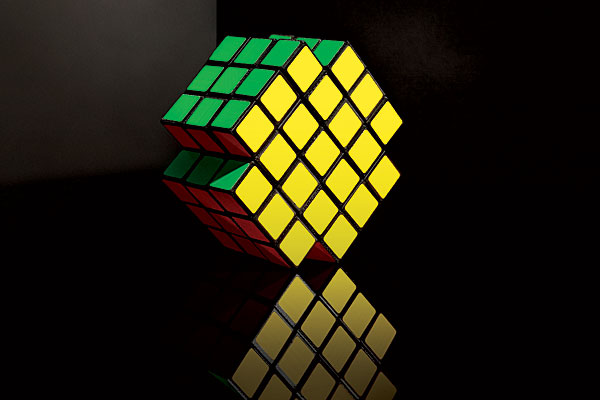

Inventor
Dane Christianson, 20, Bridgeport
What it is
A next-generation Rubik’s Cube created using 3-D printing technology
How it works
The X-shaped puzzle has two quadrillion more permutations than the classic 1980s puzzle. It consists of 52 moving parts and shifts shape.
How he came up with it
“I’ve always loved the Rubik’s Cube, but it had lost its challenge,” says Christianson, who grew up in Batavia and received his first Rubik’s Cube from his software engineer dad when he was 13. “So I decided; let’s make something harder.”
Late-night Web browsing turned Christianson on to shape-shifting puzzles. At 15, he made his first Rubik’s Cube, using a Dremel rotary tool. After he started his freshman year at IIT, he used the school’s 3-D printers to build an X-Cube and uploaded a video of himself solving it. Posted on YouTube in June, it broke one million views in three days. “When it went viral, I started shopping [the X-Cube] around, trying to see how far I could take it,” he says.
Christianson got in touch with a Hong Kong manufacturer and launched a Kickstarter campaign to raise seed money ($54,000 so far). The X-Cube’s appeal, says Scott Brown, cofounder of the Chicago toy store chain Marbles: The Brain Store, is that “it starts with something familiar and then adds an innovative twist of unfamiliarity.”
Where to buy it
Marbles (marblesthebrainstore.com) plans to start selling the X-Cube early next year.
Everpurse
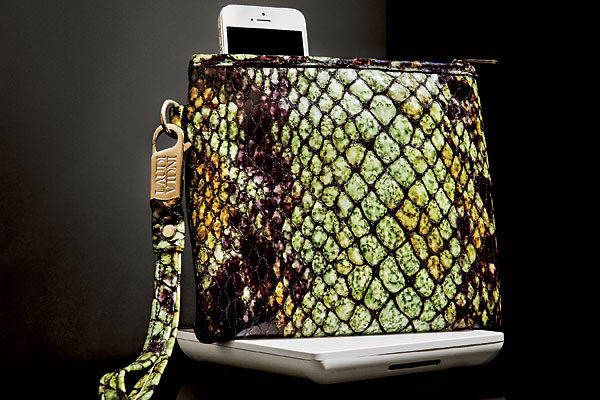

Inventors
Liz (pictured) and Dan Salcedo, both 28, Loop
What it is
A handbag that charges your smartphone
How it works
The eight-by-seven-inch purse has a sewn-in phone-charging dock that can power an iPhone 4, 4S, 5 or a Galaxy S3 or S4. Slide the phone into the dock until it clicks; the phone charges wirelessly (for more info, go to everpurse.com).
How they came up with it
“I was a social worker [in 2011] and was always running out of battery [power],” Liz says. Last year, she and her husband, Dan, founder of the e-commerce site Mobcart, designed and built the dock and chip that does the wireless charging. When her friends began clamoring for the purses, Liz says, the Salcedos realized that they “could make this a business.”
They launched a Kickstarter campaign in September 2012 and raised $238,187—more than $100,000 over their original goal. Two local boutiques, Laudi Vidni (1007 W. Armitage Ave.) and 1154 Lill Studio (900 N. Michigan Ave.), currently design the clutches, which come in 11 different styles (six leather and five fabric, from $189 to $319); Everpurse’s nine-person staff assembles the tech components in River North.
Where to buy it
Everpurse.com or, as of sometime this fall, the stores mentioned above.
SwipeSense
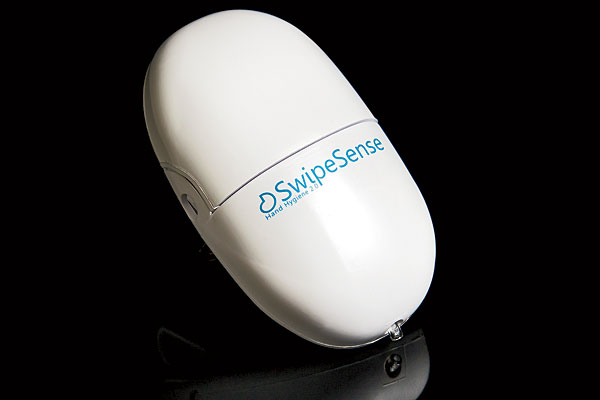
Inventors
Mert Iseri, 25, and Yuri Malina, 23, Evanston
What it is
A portable smart hand-sanitation device for medical workers
How it works
The refillable device clips to a waistband or fits in a pocket and dispenses sanitizer. An embedded electronic chip monitors usage.
How they came up with it
As students at Northwestern University, Iseri and Malina (from Turkey and France, respectively) founded Design for America, which pairs undergrads with a local business to solve a societal problem. Working with NorthShore University HealthSystem, they learned that more than 100,000 people die each year from hospital-acquired infections—and that the average hand-washing compliance rate among U.S. hospital personnel is a dismal 40 percent.
The duo came up with a solution: a compact hand-sanitation device that nurses and doctors could wear on their belts or put in their pockets. They subsequently received $50,000 in capital and mentorship from the startup accelerator Healthbox. “It’s like startup summer camp,” Malina says.
Malina and Iseri then conducted a three-month research study at two nursing units at Northwestern Memorial Hospital. “The [usage rate of hand sanitizer] went up to 64 percent after using our device,” says Malina. They now work full-time in an Evanston office, along with four full-time staff members and six interns.
Where to find it
SwipeSense is at Northwestern Memorial and Rush University Medical Systems; ten other hospitals are contracted to start using SwipeSense in December.
Fluegg
Inventor
Tatiana Garcia, 31, Champaign
What it is
A computer model that predicts the proliferation of eggs of Asian carp—an invasive species that threatens the ecosystems of rivers and lakes
How it works
Input data about a body of water, such as flow velocity (how fast the water travels), temperature, and turbulence, and the model predicts whether it is a suitable environment for carp eggs.
How she came up with it
Three years ago, as a PhD student in civil engineering at the University of Illinois at Urbana-Champaign, Garcia was casting about for a thesis project. She had always had an interest in water conservation. “I used to monitor how contaminants affected bodies of water,” says Garcia, who worked on water quality models as an undergraduate in Colombia.
She came up with a tool to help determine which Great Lakes tributaries can foster the eggs of Asian carp—a harmful fish that can weigh up to 100 pounds, eat up to 20 percent of its body mass every day, and crowd out native species.
In July, after the Obama administration announced a $50 million strategic plan for controlling Asian carp, the U.S. Geological Survey offered to fund Garcia’s research. The model she developed can help fishermen, town officials, environmental activists, and others find out how vulnerable bodies of water are to the fish. Its significance lies in its combination of hydrodynamics and biology, according to USGS hydrologist Elizabeth Murphy, one of the directors of the project. “A lot of the understanding about the hatch times of carp eggs was based on observations of where Asian carp had spawned,” Murphy says. “[Garcia] took that a step farther, finding out what is required to keep those eggs in suspension.”
Where to find it
Go to asiancarp.illinois.edu (it’s free).
inForm Athletic shorts
Inventors
A research team led by Craig Niederberger, 53, at the University of Illinois at Chicago
What they are
Men’s bike shorts that help prevent erectile dysfunction
How they work
The smart shorts monitor how much force is being applied to the penile arteries by the bicycle seat. That information gets relayed to the rider’s smartphone. When alerted to a blood-flow problem, the rider can shift his position or take a break.
How they came up with them
“In the late 1990s, there was a lot of concern about [pressure from bicycle seats] causing damage to the arteries, but nobody had measured the force directly,” says Niederberger, who is the head of urology at UIC’s College of Medicine. He and his team did research that confirmed an adverse effect on blood flow to the penis: Sustained pressure makes the arteries close up. “A lot of bicycle manufacturers [tried to solve the problem with] noseless seats,” says Niederberger. His team opted for a simpler, cheaper solution: sensory-reading shorts. They come with a small computer that monitors the rider’s movements.
Where to find them
The shorts currently exist only in prototype. “We’re working on the wireless connection between the shorts and the smartphone app,” says Niederberger, who hopes to bring the shorts to market next year.



